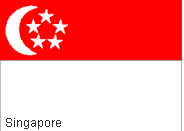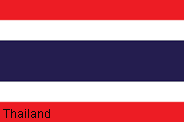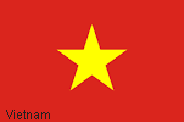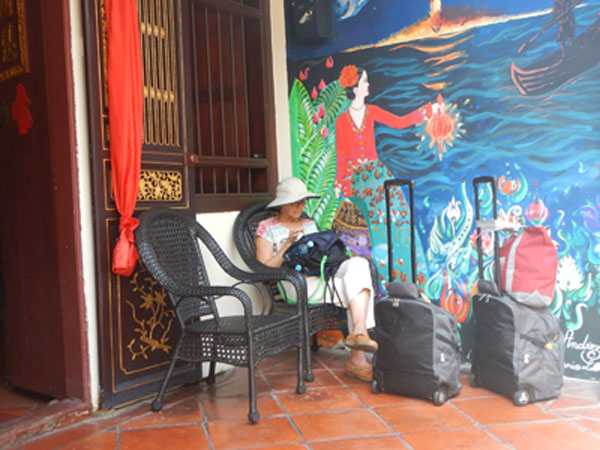 |
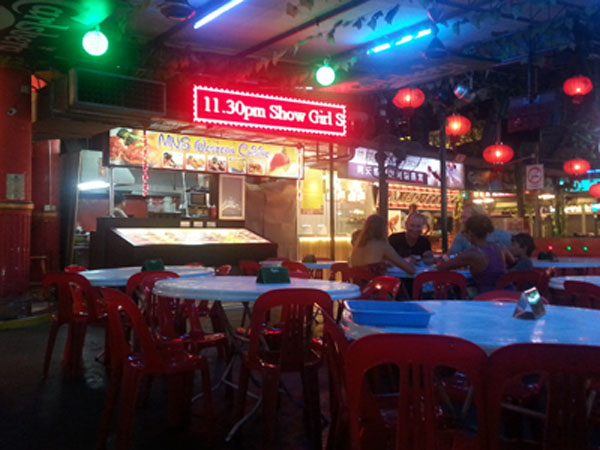 |
|
Here we are waiting for a cab. Bookings.com had our room at this cute hotel
listed as a family unit, which we assumed had a private bath. Instead
it came with 3 beds. After one night and sharing one toilet and two functioning
showers with 30 other guests, we decided to check elsewhere.
|
We
found out why so many people flock to Penang--great food at a low-low price.
This place is known as a "hawkers" restaurant, where 20 some vendors sell a
variety of Asian and Indian food. We learned a lot about why people retire
here from two
Australian couples we met. |
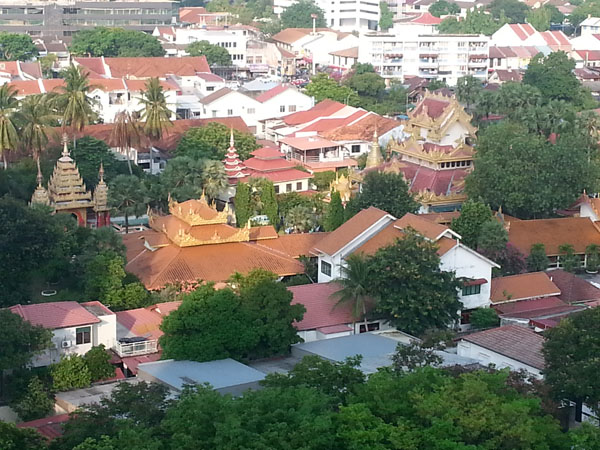 |
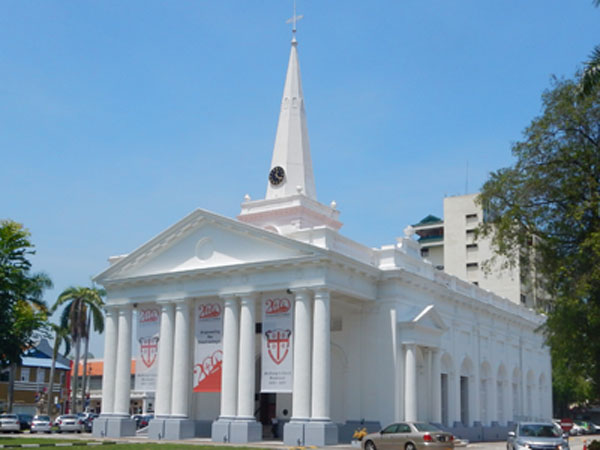 e e |
| This
Buddhist Temple was the view from our new digs--12th floor balcony in a 20 story
condo. We rented a huge bedroom with a private bath and shared the
kitchen, living and dining space. |
Georgetown was named for King George, who was on the throne when the Brits
invaded Penang. St. George was the first Anglican Church built in
Southeast Asia.
|
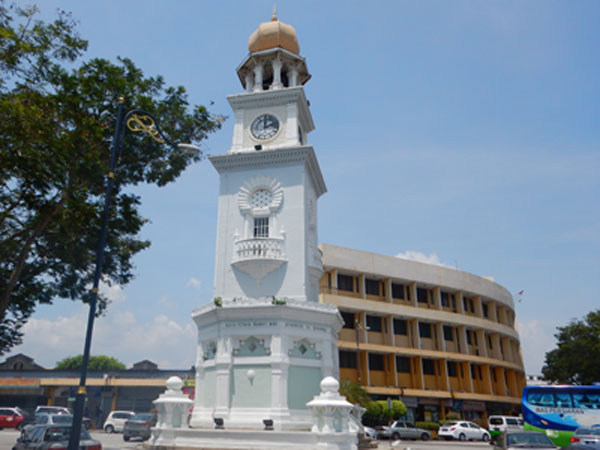 |
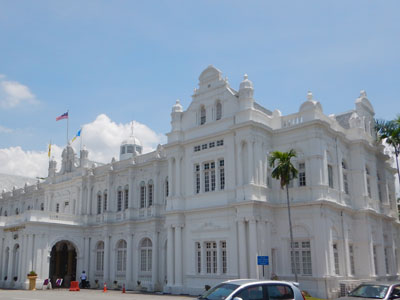 |
|
On the 60th anniversary of Queen Victoria's reign, a local businessman built
this 60 foot clock and dedicated it in her honor.
|
Georgetown is the capital of Penang, but what caught our eye was their
City Hall, built by the British Empire in the early 1900. |
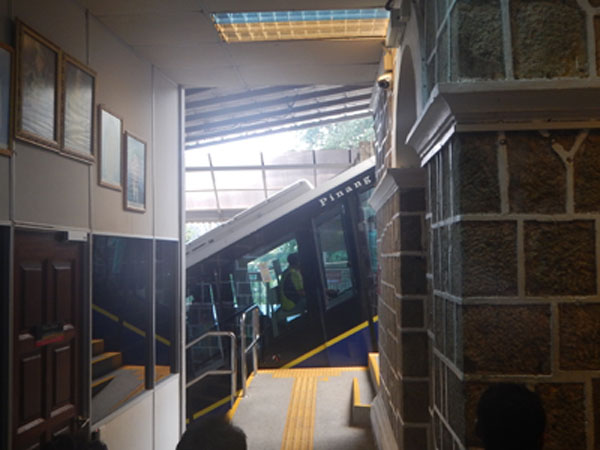 |
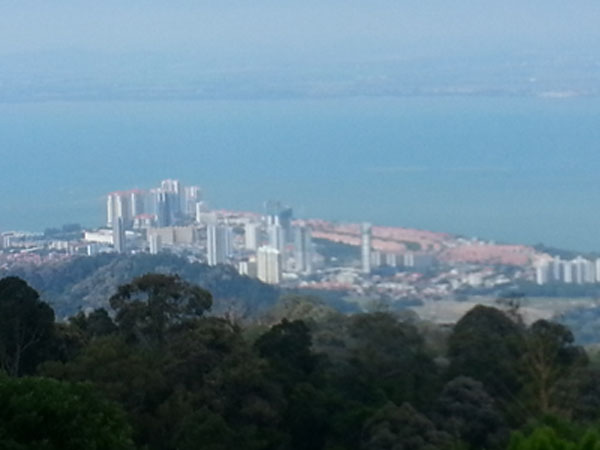 |
|
We rode on the Funicular Railroad to the top of Penang Hill.
Initially
built in the early 1900s as a retreat for the colonial Brits. The mile long
ride goes through two tunnels and up slopes as steep as 60 degrees. |
This
is the view from the top overlooking the skyline of Georgetown. The
mainland of Malaysia is off in the horizon. With the temps in the high 80s and
high humidity at about the same percent, the view is a bit hazy. |
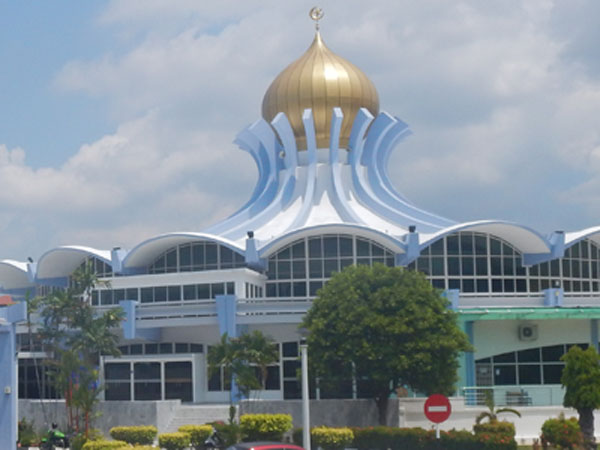 |
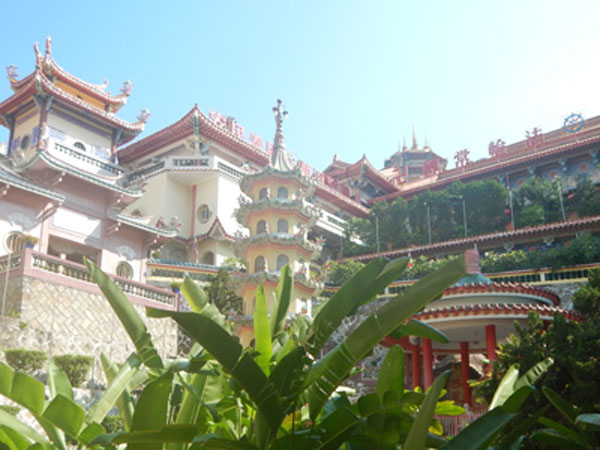 |
|
Over 60 percent of Malaysians are Islam. On our Hop On Hop Off bus,
we drove past this "state owned" Mosque that can hold up to 5,000 people. |
Down
the road a bit, we toured the Buddhist Temple of Supreme Bliss, said to be the
largest temple in Malaysia. |
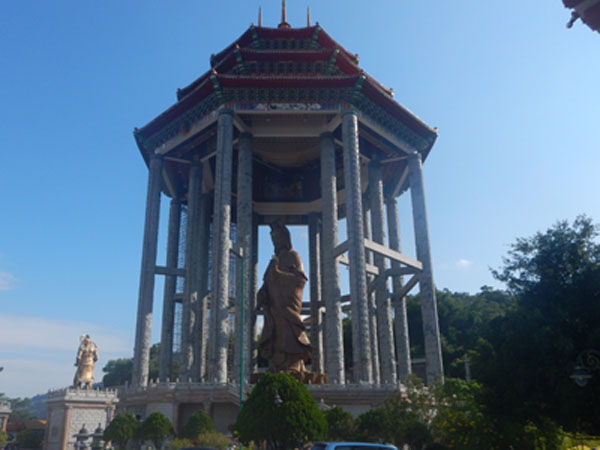 |
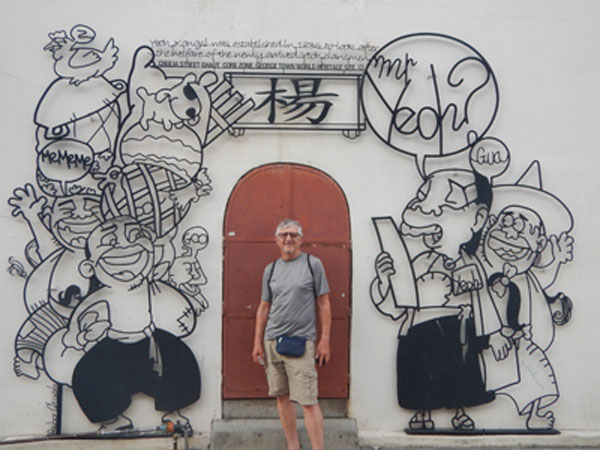 |
| The
temple grounds includes several podagas plus this seven story statue (99
feet) of Kuan Yin, the Goddess of Mercy. |
Georgetown is a protected UNESCO Heritage site and its street art like this makes
it a fun way to see the city. |
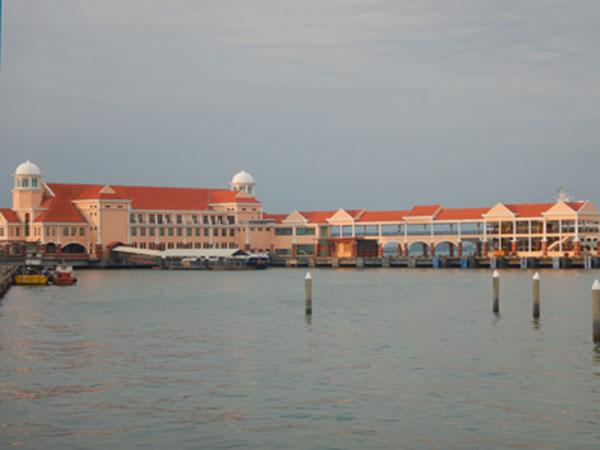 |
 |
| The
waterfront is lined with piers used as restaurants, hotels, markets, and
even a ferry terminal. |
This pier is one of six jetties that
has been used as Chinese settlements
since the late 1800s. Each jetty is named after a clan. |
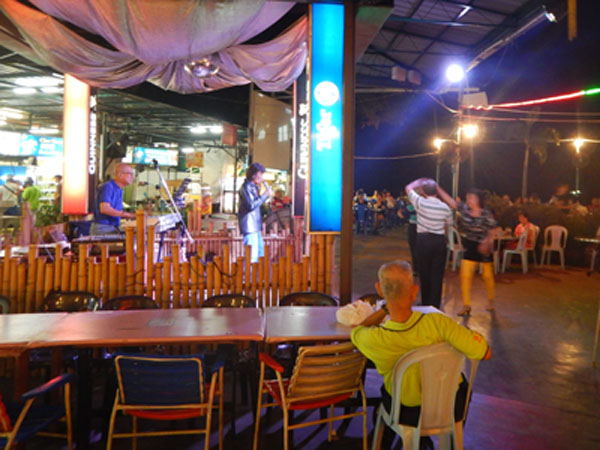 |
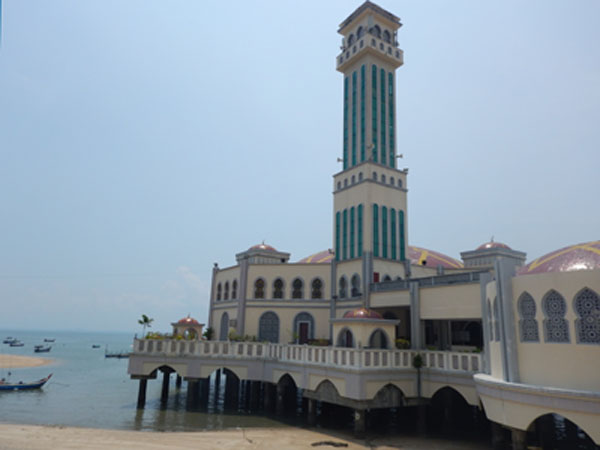 |
|
We enjoyed the first "hawker" restaurant so much, we decided to try another
one. In addition to great food, it had live music and dancing. |
On our last day in Penang, we
hired a taxi to take us to some more "must see" sites. This included the Floating
Mosque, stretching out into the ocean on pilings and stilts. |
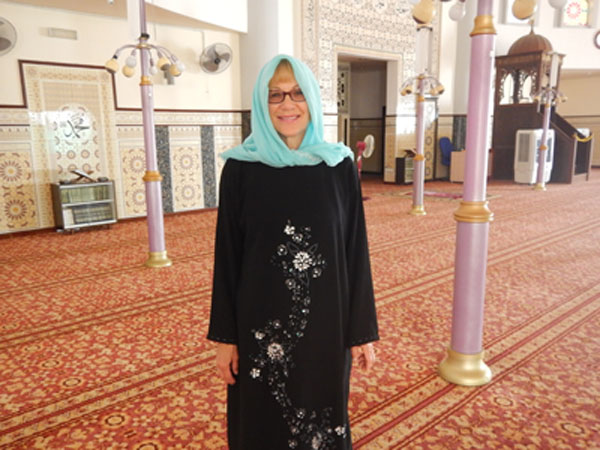 |
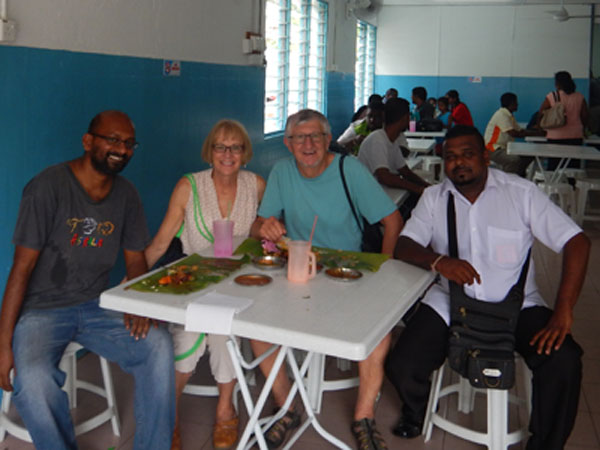 |
|
Entry into the floating mosque was free. Glorine
was required to "cover-up" by putting on a dress and veil. Some
say this is so men don't get distracted by looking at a women's anatomy. |
Our
taxi driver, Vicky on the right, suggested this Indian restaurant. Surya,
the owner, served us food on banana leaves, which we ate with our hands.
It was a great experience! |
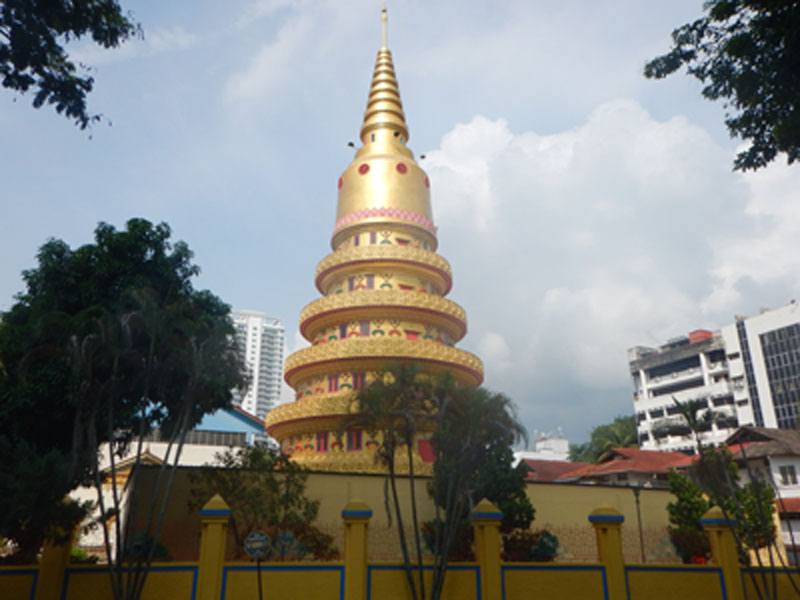




 e
e













